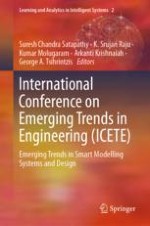2020 | OriginalPaper | Chapter
Infrared Heating - A New Green Technology for Process Intensification in Drying of Purslane Leaves to Reduce the Thermal Losses
Authors : D. Kodandaram Reddy, Kavita Waghray, S. V. Sathyanarayana
Published in: International Conference on Emerging Trends in Engineering (ICETE)
Publisher: Springer International Publishing
Activate our intelligent search to find suitable subject content or patents.
Select sections of text to find matching patents with Artificial Intelligence. powered by
Select sections of text to find additional relevant content using AI-assisted search. powered by
